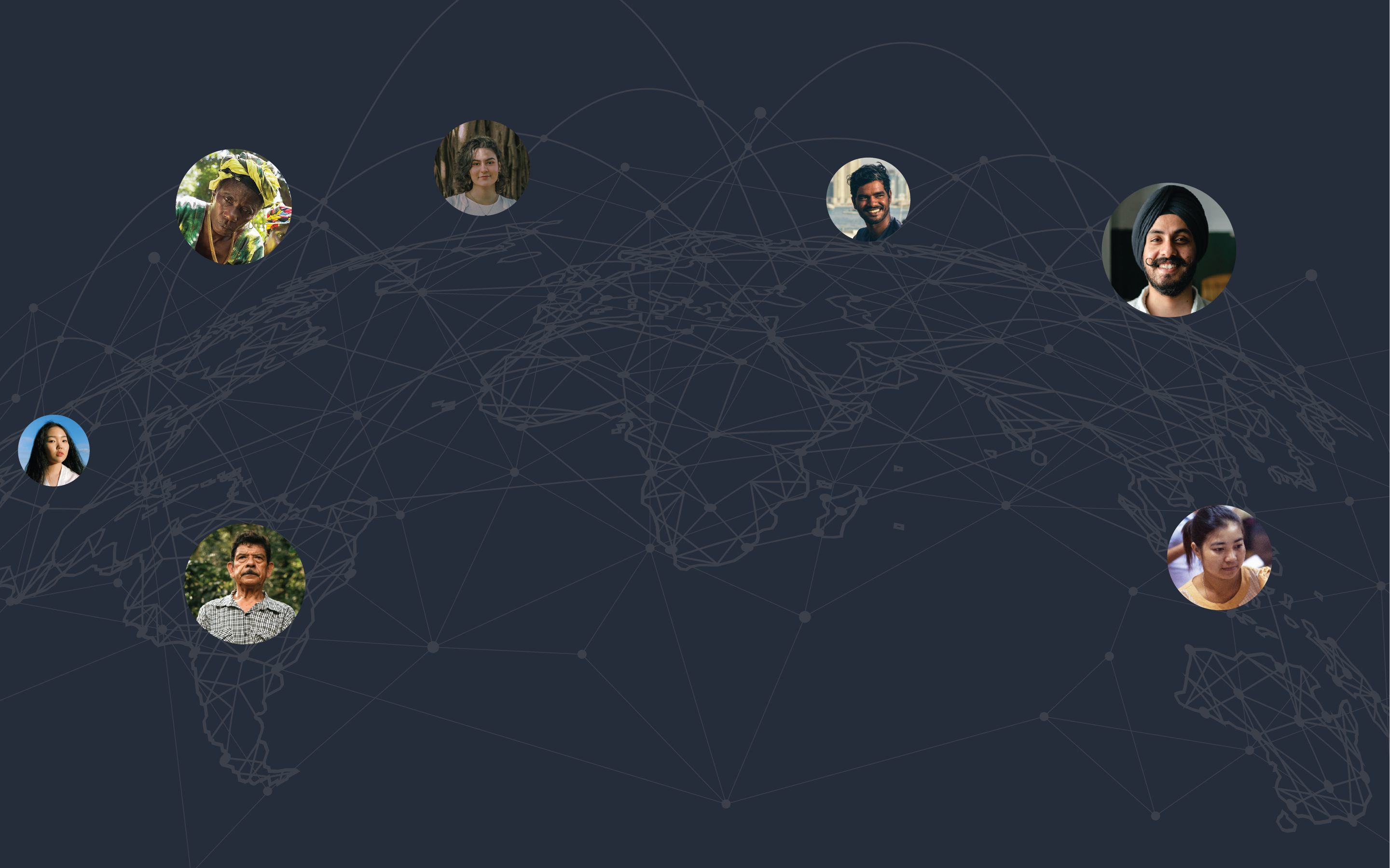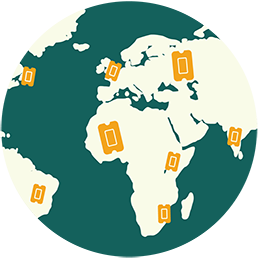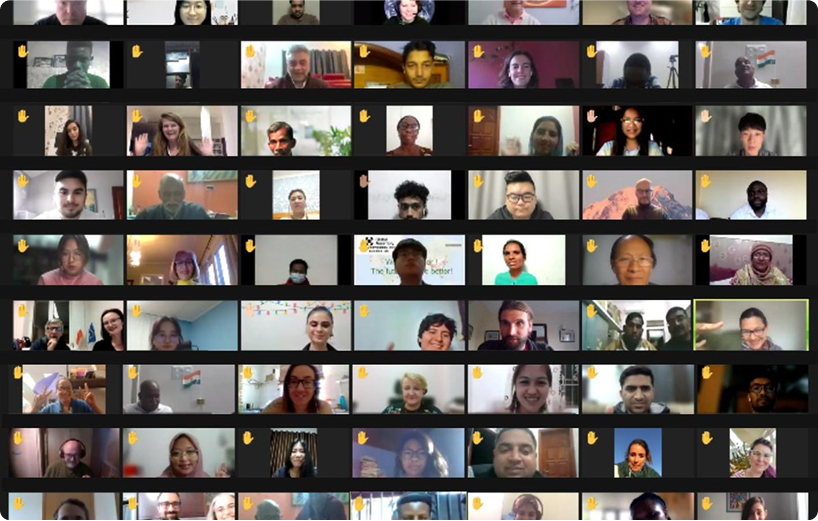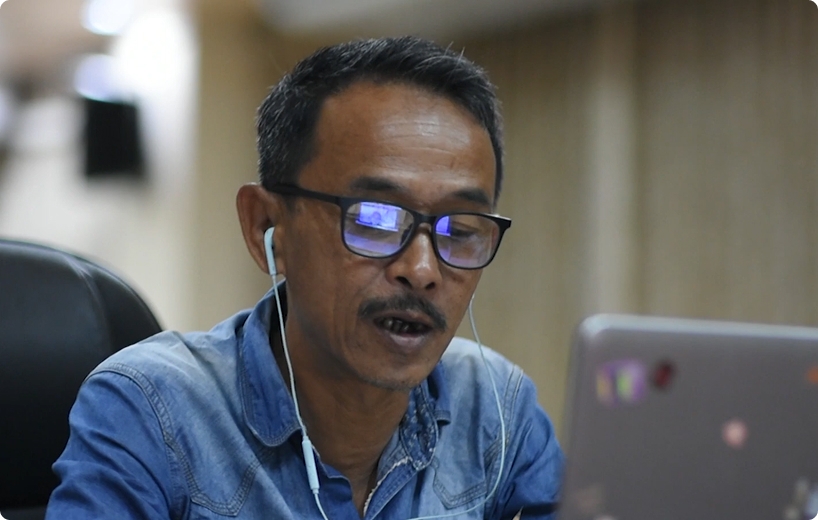

September 2025
An algorithm picks random locations in the world.
Points are more likely to land in locations where
more people live, with adjustments made to slightly
over-represent more climate-vulnerable regions.

September-December 2025
GCA teams in each world region search for trusted
community organizations near each map point.
These Community Hosts will recruit 5-10 potential
Assembly Members and, later, support the
participation of the one who is chosen at that location.

Early January 2026
To achieve a balanced ‘mini-public’, another algorithm
selects one person from each map point so that
together they resemble the collective diversity of
the world's population in terms of gender, age,
education, and other relevant characteristics.

17 January - 14 March 2026
The selected Assembly Members explore key
dilemmas in global food systems in the context
of climate change, producing recommendations
based on thoughtful judgements about what
they have learned from information about the
topic and from each other.

March 2026 onwards
The Civic Assembly’s recommendations, together with
outputs from Community Assemblies, provide a clear
signal to people and institutions at all scales to direct
the decision-making and actions needed to maintain
a healthy planet and feed everyone who lives on it.
The members of the 2026 Civic Assembly will gather online for 42 hours, over 14 three-hour sessions, between January and March. The structure of the deliberation process is based on the popular Three Horizons framework and the CLIMAS methodology.

Introduction to the Assembly.
Surface Assembly Members’ own experience alongside expert-informed learning on topics including climate change, diet & health, food production & distribution, sustainability.

Set a collective vision/goals.
Use scenarios to understand the links between food and climate, highlighting constraints and opportunities in the political/policy landscape.
Explore key dilemmas between food systems and environment/climate impact, identifying new future scenarios.

Define impact areas (e.g. consumption patterns, land use), identify key leverage points, and explore the trade-offs of different approaches to addressing the impact areas. Understand who benefits, who loses, and how harms can be mitigated.
Propose, draft, and finalize recommendations based on the trade-offs around the collectively-defined future scenario.


